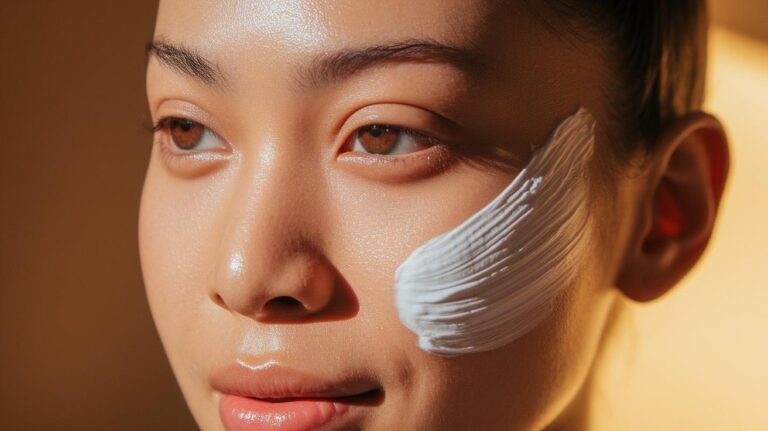Dealing with textured skin can sometimes feel like navigating a maze with no clear exit. Whether you’re battling acne scars, enlarged pores, or uneven skin tone, the journey to smoother, glowing skin requires patience, consistency, and the right approach. The good news? You don’t need expensive treatments or complicated routines to transform your skin. With some targeted strategies and effective skincare tips for textured skin, you can gradually improve your skin’s texture and reveal a more radiant complexion that makes you feel confident in your own skin.
Understanding Textured Skin: What Causes It?
Before diving into solutions, it’s helpful to understand why skin becomes textured in the first place. Textured skin typically refers to skin that isn’t smooth to the touch and visually appears uneven due to:
Genetics play a role too, which means some of us are simply more prone to textured skin than others. But don’t worry—nature isn’t destiny when it comes to your complexion!
Essential Daily Habits for Smoother Skin
Consistency is key when tackling textured skin. These daily habits form the foundation of any effective skincare routine:
Gentle Cleansing: The First Step
Your cleansing approach can make or break your texture-fighting efforts. Harsh soaps strip your skin’s natural moisture barrier, potentially worsening texture issues. Instead, opt for gentle, pH-balanced cleansers that remove impurities without compromising your skin’s health.
For morning routines, a light cleanse works well, while evenings call for a more thorough approach to remove makeup, sunscreen, and daily grime. If you wear heavy makeup, consider double cleansing with an oil-based cleanser followed by a water-based one.
Exfoliation: The Game-Changer
When it comes to improving skin texture, exfoliation stands tall as perhaps the most transformative step. It removes dead skin cells that can make skin look dull and feel rough.
Chemical exfoliants like AHAs (glycolic, lactic acid) and BHAs (salicylic acid) often work better than physical scrubs for textured skin:
Start with twice-weekly exfoliation and adjust based on how your skin responds. Remember, more isn’t always better—over-exfoliation can damage your skin barrier and worsen texture.
Hydration Inside and Out
Dehydrated skin often appears more textured, with fine lines and rough patches becoming more pronounced. A multi-faceted approach to hydration includes:
Even if you have oily skin, don’t skip moisturizing—dehydrated oily skin often overproduces sebum to compensate, potentially worsening texture issues.
Power Ingredients That Transform Textured Skin
When building your skincare arsenal against texture, these ingredients deserve special attention:
Retinoids: The Gold Standard
Dermatologists consistently recommend retinoids (vitamin A derivatives) for textured skin because they:
If you’re new to retinoids, start with a lower concentration like 0.25% retinol and use it just once or twice weekly, gradually increasing frequency as your skin builds tolerance. Applying moisturizer before retinol (known as “buffering”) can help minimize irritation.
Vitamin C: Brightness Booster
A potent antioxidant, vitamin C helps:
Look for stable forms like L-ascorbic acid (if your skin can tolerate it) or derivatives like sodium ascorbyl phosphate for sensitive skin types.
Niacinamide: The Multi-Tasker
This form of vitamin B3 is exceptionally versatile for textured skin concerns:
The beauty of niacinamide is its compatibility with most other skincare ingredients, making it easy to incorporate into any routine.
Professional Treatments Worth Considering
While at-home care forms the foundation of your texture-improving routine, professional treatments can accelerate results:
These treatments vary in cost, downtime, and suitability for different skin types, so consult with a dermatologist or licensed esthetician before proceeding.
Lifestyle Factors That Affect Skin Texture
Your skin doesn’t exist in isolation—everything from diet to sleep affects its appearance:
Common Mistakes to Avoid
When battling textured skin, watch out for these potential pitfalls:
Remember that improvement takes time—most skincare experts suggest giving new products at least 4-6 weeks before judging results, and more significant textural changes may take months to become noticeable.
Tailoring Your Approach to Your Skin Type
While the principles above apply broadly, your specific skin type may need special consideration:
Listen to your skin’s feedback—tingling is normal with some actives, but burning, prolonged redness, or irritation means you should back off.
Conclusion
Improving textured skin isn’t an overnight process, but with consistency and the right approach, you can achieve smoother, more radiant skin. Focus on building a routine with gentle cleansing, strategic exfoliation, proper hydration, and targeted ingredients like retinoids and niacinamide. Remember that professional guidance can be invaluable, especially for persistent texture concerns.
Perhaps most importantly, be patient with your skin’s journey. Progress often comes gradually, with subtle improvements accumulating over time. The key is maintaining consistent habits while adjusting your approach based on how your skin responds. With these skin care tips for textured skin, you’re well-equipped to nurture your complexion to its smoothest, most glowing potential.







